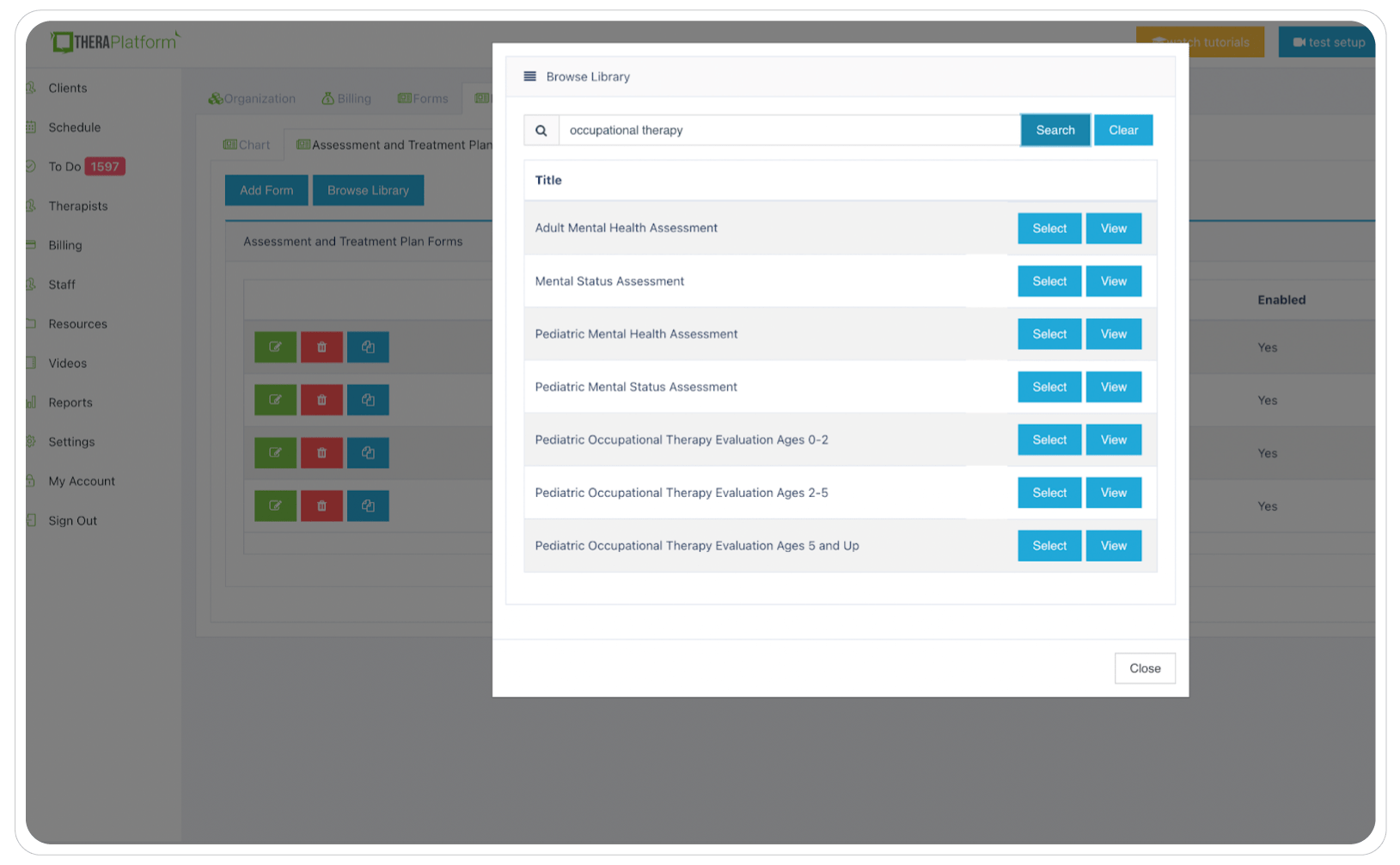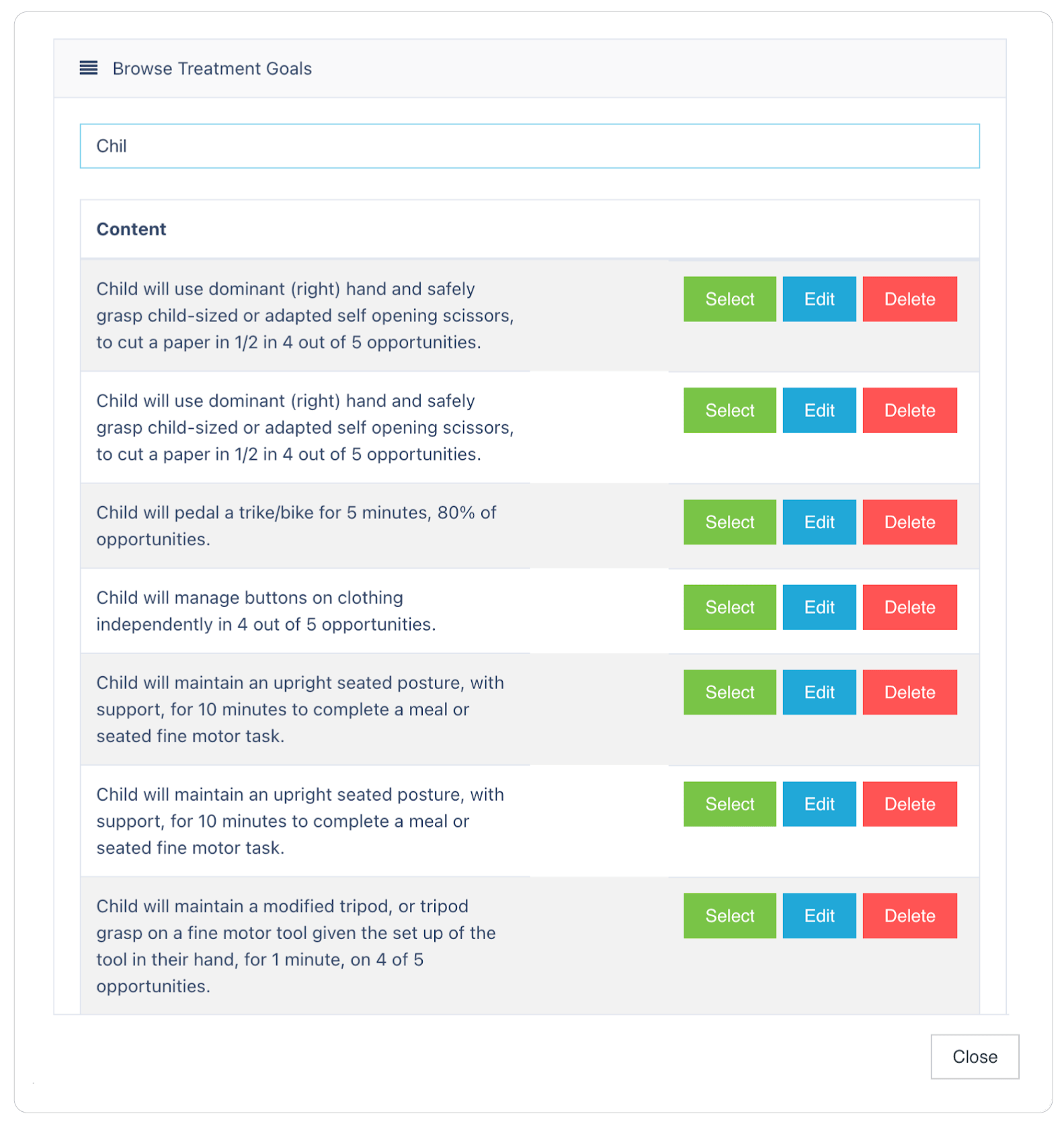Occupational therapy goals for children and adults

Occupational therapy goals embody a comprehensive approach that is dedicated to enhancing the quality of life of individuals across the lifespan, from the earliest stages of childhood to the later years of adulthood. Occupational therapy is a discipline that seeks to elevate the quality of life for both children who are experiencing developmental hurdles and adults navigating the complexities of injuries or disabilities.
A fundamental and integral part of occupational therapy is the meticulous process of goal setting. In this blog, we will elaborate on the concept of occupational therapy goals, offering perspectives on the establishment of goals specific to diverse demographic groups including children and adults. We will also explore the relationship between occupational therapy goals and their role in the monitoring of therapeutic progress and the ultimate achievement of treatment outcomes and provide occupational therapy goals examples.
At the core, occupational therapy goals are carefully curated for each individual client. These goals serve the specific purpose of addressing distinct challenges, highlighting functional abilities, and improving the overall quality of life for the individual. In occupational therapy, the role of goals is specifically to guide therapy interventions and track progress. Furthermore, goals can provide insight if adjustments need to be made to therapy, if different therapies are warranted, and/or if a client is ready to take a break or to be discharged from therapy.
Fine and gross motor skills occupational therapy goals
Occupational therapy goals are formulated by using the SMART (specific, measurable, relevant, and time bound) approach. The SMART approach allows for creating effective and meaningful goals in therapy. It also clearly identifies the objectives, allows for tracking progress, and to determine if goals have been successfully met.
When composing occupational goals for the pediatric population, it is vital to consider varying aspects of development including age or developmental stage, play skills, social emotional, physical, feeding, and cognitive skills, as well as sensory development. In occupational therapy practice, goals are tied to functional outcomes such as a child being able to independently dress themselves, brush their teeth, participate with peers, and/or be able to perform seated tasks with an upright seated posture for an age appropriate time.
Fine and gross motor skills occupational therapy goals examples
An example of pediatric occupational therapy goals focused on fine and gross motor skills using the SMART approach would be the following:
Long Term Goal: Child will complete developmentally appropriate self care and fine motor tasks, and maintain an upright seated posture for 15 minutes, with minimal assistance, on 80% of opportunities.
Short Term Goals
- Gross Motor Goal: Child will maintain an upright seated posture, with support, for 10 minutes to complete a meal or seated fine motor task.
- Fine Motor Goal: Child will use dominant (right) hand and safely grasp child-sized or adapted self opening scissors, to cut a paper in 1/2 in 4 out of 5 opportunities.
- Fine Motor Goal: Child will maintain a modified tripod, or tripod grasp on a fine motor tool given the set up of the tool in their hand, for 1 minute, on 4 of 5 opportunities.
- Fine Motor Goal: Child will manage buttons on clothing independently in 4 out of 5 opportunities.
Long Term Goal: Child will have the endurance to participate in a developmentally appropriate physical activity for 10 minutes on 75% of opportunities
Short Term Goals
- Gross Motor Goal: Child will pedal a trike/bike for 5 minutes, 80% of opportunities.
Sensory processing occupational therapy goals
Another aspect of child development to consider when formulating goals is sensory processing. Each individual has specific sensory needs and profile. When a child has sensory concerns to the point that it impacts their daily life such as participating in social and school events, it can be problematic.
Some areas of focus for children with sensory challenges include decreasing tactile, vestibular, auditory, and oral sensitivity, and or having children know and find strategies that work for them to regulate their bodies and modulate the sensory input. As with any goals, sensory goals are also tied to a functional outcome such as increasing attention, participating in a play based task, and/or participating in a daily activity or routine. The SMART approach is still utilized for writing sensory goals.
Sensory processing occupational therapy goals examples
An example of a target occupational therapy goal for a child with sensory processing related issues can be found below:
Long Term Goal: To reduce tactile sensitivity in a child with sensory processing challenges, the child will engage with different textures, in order to participate and eat a family meal.
Short Term Goal: Within 4 weeks, the client will be able to engage with wet textures such as slime, for 5 minutes.
Long Term Goal: Child will utilize sensory strategies of choice (fidgets, wiggle cushion, lap pad etc.), in order to sustain attention to tasks for 10 minutes during circle time.
Short Term Goal: Within 4 weeks, the client will be able to identify when sensory strategies are needed and will utilize 1 2 sensory strategies (fidgets, wiggle cushion, lap pad etc.), in order to sustain attention to tasks for 5 minutes during circle time.
Activities for Daily Living occupational therapy goals
For adults, occupational therapy goals address issues such as their ability to engage in activities of daily living (ADLs), workplace environment, ergonomics, productivity, and address mental health and emotional well being. Furthermore, occupational therapy goals are specifically tailored to address the unique factors that may impede a client’s overall functional abilities such as cognition, musculoskeletal issues, pain management, and managing stress.
Activities for Daily Living occupational therapy goals examples
Goals for Addressing Activity of Daily Living
Long Term Goal: Client will get dressed independently with 80% accuracy in 4 out of 5 opportunities, while adhering their hip precautions with 100% accuracy.
- Short Term Goal 1: Client will put on a pull up pants with 50% assistance in 4 out of 5 opportunities, while adhering to hip precautions.
- Short Term Goal 2: Client will put on both socks with 50% assistance while using an assistive device such as a sock aid in ⅘ opportunities, while adhering to hip precautions.
- Short Term Goal 3: Client will put on both shoes with 50% assistance while using an assistive device such as a shoe horn in ⅘ opportunities, while adhering to hip precautions.
Ergonomic Occupational Therapy Goals:
Long Term Goal: Client will demonstrate understanding of proper sitting body mechanics (90 90 90 Rule) and standing posture to reduce risk of injury and pain in 4 out of 5 opportunities with 80% accuracy.
Short Term Goal 1: Client will utilize ergonomic chair and have regularly posture checks 4 out of 5 weekdays.
Short Term Goal 2: Client will utilize appropriate computer/laptop placement, keyboard, and mouse position in order to reduce the risk of injury and pain.
Productivity Occupational Therapy Goals:
Long Term Goal: Client will create an organized and efficient work space environment to minimize distraction, to improve attention to projects, and to improve time management in order to enhance workplace productivity by 25%.
- Short Term Goal: In 4 weeks, client will declutter the work space to optimize the environment and use organization tools (file folders, color coding, labeling etc.)
- Short Term Goal: In 4 weeks, client will implement tools such as prioritizing tasks via lists and calendar for deadlines.
Stress Management Occupational Therapy Goals:
Long Term Goal: Client will develop effective stress management tools in order to cope with daily challenges, in order to reduce overall stress from PSS 18 to 10 (perceived stress scale).
- Short Term Goal: Client will utilize stress management tools such as mindfulness, journaling, meditation, at least 1 time per day.
- Short Term Goal: Client will understand and recognize emotions felt and express them appropriately, with 80% accuracy.
Start 30-day Free Trial and explore TheraPlatform. HIPAA Compliant Video and Practice Management Software for Therapists.
How can EMR software can help with occupational therapy goals and notes?
EMR software, such as TheraPlatform, offers significant advantages in creating efficient, adaptable, and precise occupational therapy goals and assessment notes for occupational therapists. The key is minimizing the amount of time dedicated to creating, storing/managing and sharing notes through the use of intuitive features.
How to streamline occupational therapy goals and assessments
An EMR like TheraPlatform can minimize the amount of busywork associated with evaluation and occupational therapy goals. Let’s take a look at how TheraPlatform’s features helps streamline the occupational therapy assessment and goal setting processes.
Assessment SOAP notes creation
Saving time on creating both assessment and SOAP notes for occupational therapy can be done in three ways.
1. Using a template library: TheraPlatform's EMR provides built-in note templates, including SOAP notes, ensuring occupational therapists maintain consistency and conciseness in their documentation. These templates follow a standardized format, facilitating easy review. You can see an example of TheraPlatform’s built-in therapy note template in the screenshot below.

2. Customizable note templates: While templates are a great foundation, TheraPlatform's EMR features a flexible note template builder, empowering occupational therapists to customize SOAP note templates according to their preferred documentation style. Whether you prefer the traditional SOAP format, a single narrative field, or the inclusion of checkboxes, the template builder offers versatility and efficiency without the need to completely modify an existing template.

Screenshot of TheraPlatform’s form builder
3. Duplication: TheraPlatform's EMR enables therapists to save time and maintain consistency by copying notes from previous sessions and it also memorizes all the new goals you enter so you don’t need to type the same goal ever again. You can enter a new goal once and next time you need to use it for another client, you can simply look it up under your goal bank. This feature simplifies the documentation of recurring information or progress updates, allowing therapists to easily edit and expand upon the copied notes as necessary. No more writing the same information from scratch each and every time.

Screenshot of your personal goal look-up in TheraPlatform
It is important to understand that occupational therapy goals are dynamic in nature and ever evolving as clients' needs are also changing. Occupational therapy goals can be adjusted accordingly as clients or caregivers may have different concerns come up during the therapeutic process. Regular and consistent check-ins allow for insight on timelines, progress, and achievements made in therapy. It also provides data on the effectiveness of evidence based therapeutic interventions and methodologies. Overall, consistent check ins allow for an improvement in the effectiveness and quality of occupational therapy interventions and services.
Overall, occupational therapy is a client centered approach that emphasizes goal based development that is specific to individual client needs. Evidence based occupational goal development provides a means to measure progress, allows for specific and focused interventions, and allows for greater independence of the client. By aligning therapeutic interventions with the latest research results, therapists can confidently provide and implement interventions with proven results, which overall improve and enhance a client’s quality of life and independence, as well as enhance your occupational therapy practice.
Resources
TheraPlatform, an all-in-one EHR, practice management and teletherapy tool for therapists, allows therapists to manage several aspects of their practice, from financial organization to scheduling. Consider starting with a free, 30-day trial with no credit card required. Cancel anytime.
More resources
- Therapy resources and worksheets
- Therapy private practice courses
- Ultimate teletherapy ebook
- The Ultimate Insurance Billing Guide for Therapists
- The Ultimate Guide to Starting a Private Therapy Practice




